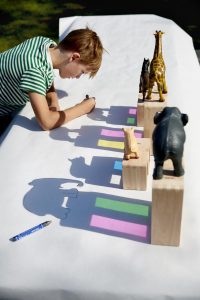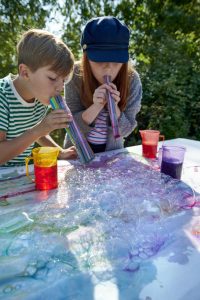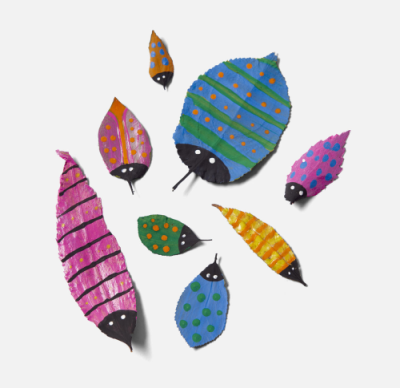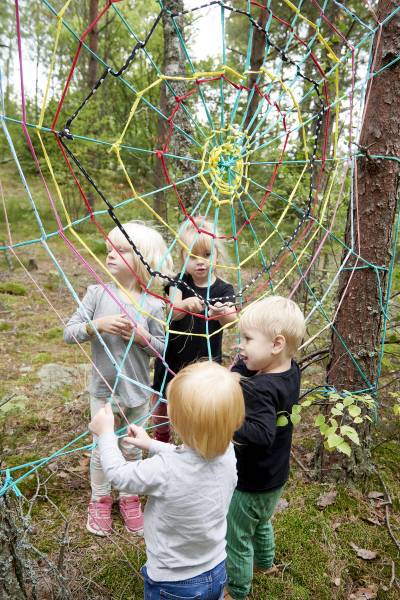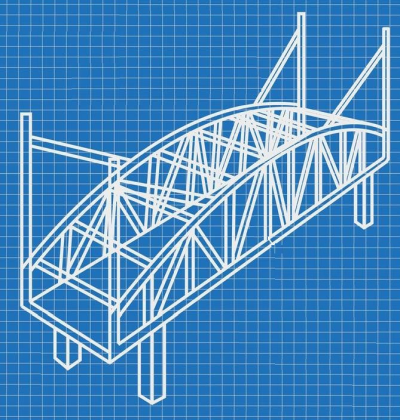MATERIAL
- A container of some kind, preferably translucent, (a bucket or countertop works just fine).
- Things to try if they float or sink, for example: pencil, candle, coin, ball, pearl, apple, button, orange, macaroni, eraser, carrot bit, sequin, scissors, keychain, piece of paper, wooden button, piece of wood, cucumber, screw, nail , cork, CD, glass jar, gem. Only your imagination sets boundaries, so check boxes and cabinets in the department, look in the kitchen and in the workshop / studio / carpentry room and pick up things that look interesting.
Allowing the children to make a hypothesis or make a guess as to what will happen to their chosen objects is a good method for getting the children’s thinking started and not getting caught up in doing it. It is very fun to drop things in water and just see what happens, but in an experiment it is also about trying to awaken the children’s ability to reflect and think about what is happening. What do you think will happen? Why? How can we get on with it?
Float or sink 2
The working method here is to challenge what the children already know. What did you choose last time, and what happened then? How can you make it float if it dropped, or sink if it floated?
Clara chose a coin that she knew would sink. That the eraser rubber floated, she also knew this after last time’s experiment. After a while thinking about how she could make the coin flow, she tried to attach her coin to the eraser using rubber cords.
Time to try it out!
One eraser was too small to make the coin float well, but when Clara took two erasers it was better to get the coin to float.



